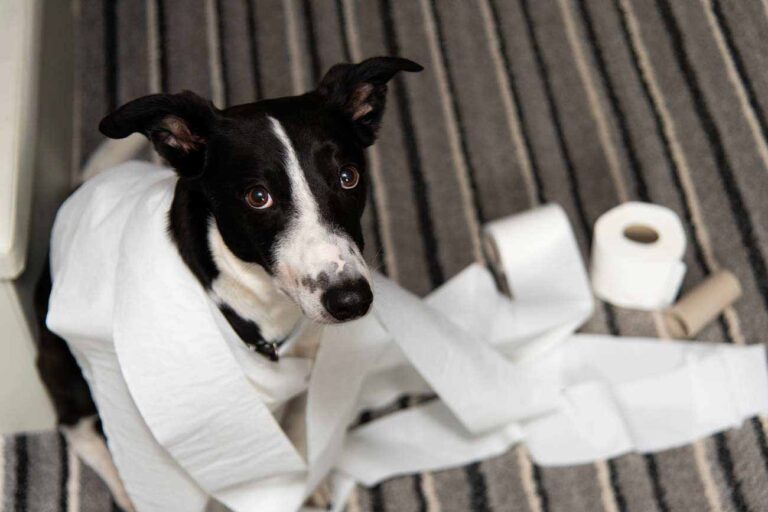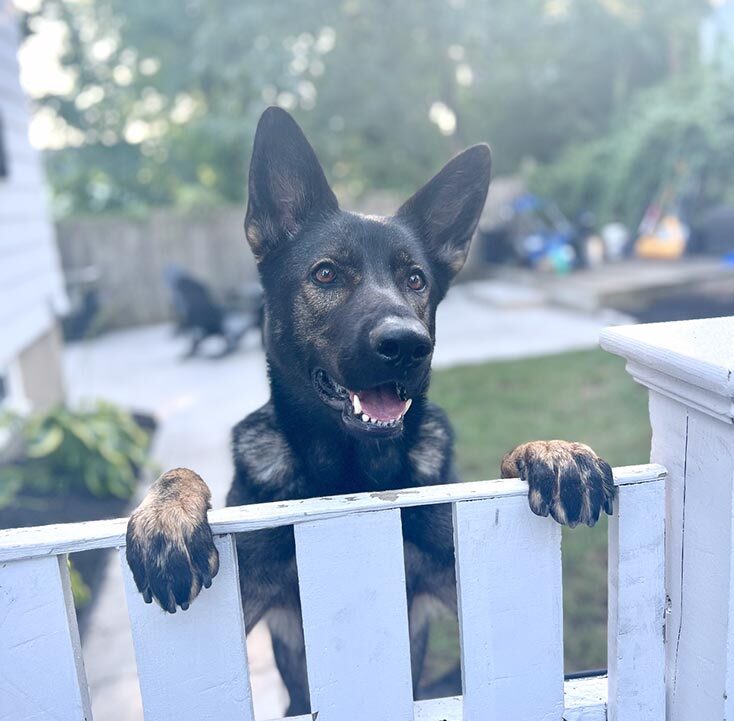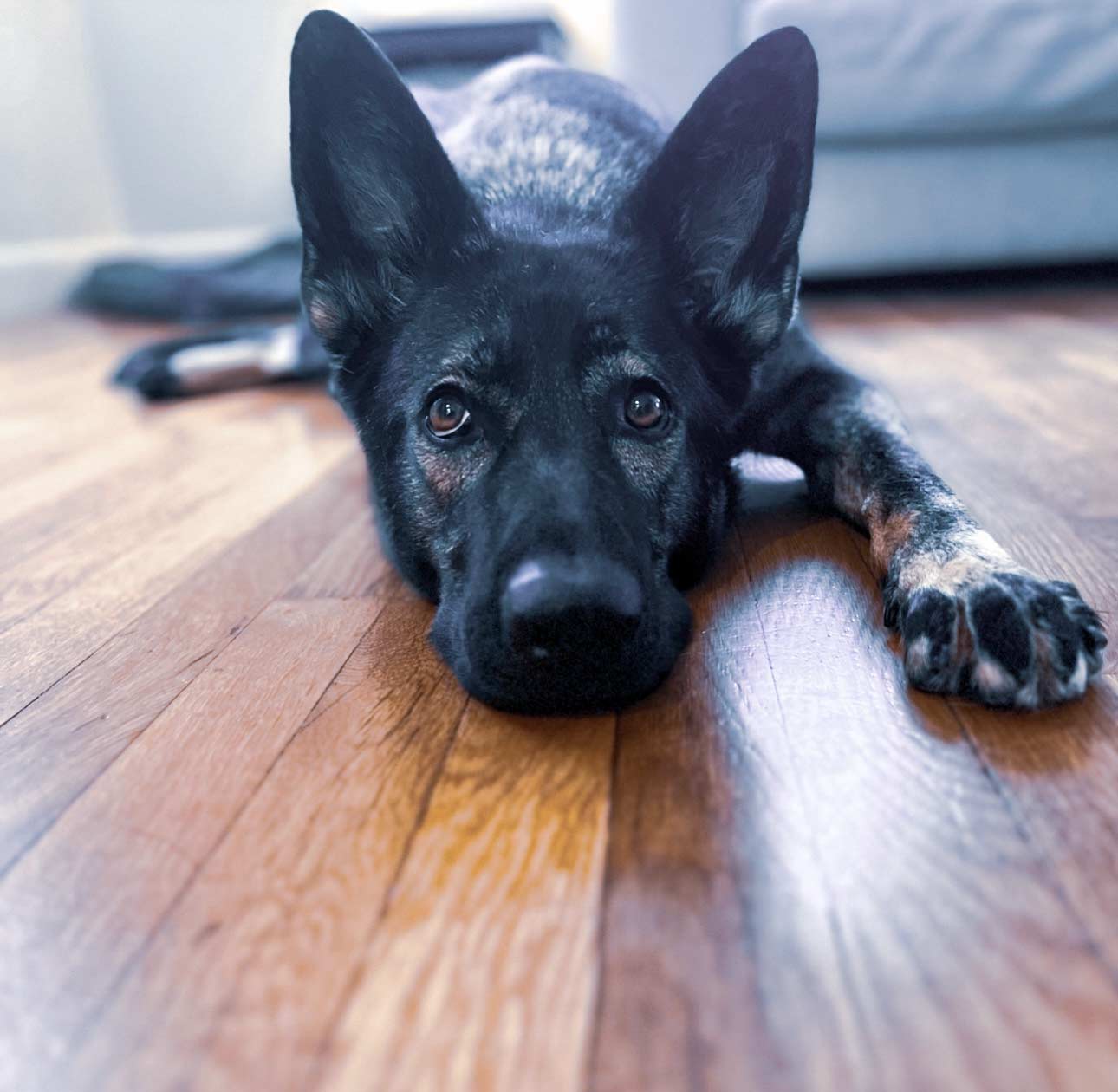Have you ever wished your canine companion could tell you when they need to go outside to use the bathroom? You might be surprised to know that we can make that a reality! Enter dog potty bell training!
This ever-simple yet ingenious tool can revolutionize how you and your pup handle potty training and breaks. Let’s dive into the world of dog potty bells and how you can make this a valuable part of your dog’s routine.
Dog potty bells are a set of hanging bells or a bell button that your dog can ring to let you know they need to go outside. The bells can hang on the doorknob or sit near the door, eliminating confusion about what your dog needs.
Benefits Of Dog Potty Bell Training

A dog potty bell can decrease any frustration on the part of your dog and eliminate accidents inside the house. Additionally, a potty bell can streamline communication between your dog and other people in your home who might not understand your dog’s signals, like a pet sitter or a relative.
Whether you are potty training a new puppy or working with an adult dog, a potty bell helps fulfill your dog’s core needs, increasing your bond and leading to a happier, healthier pup!
Choosing The Right Potty Bell For Your Dog Before Training
Choosing the best potty bell for your dog is crucial to the success of training your dog. Factoring your dog’s height, size, and strength will ensure you get the best dog bell for your furry friend.
Lightweight, longer-hanging bells are an excellent choice for puppies and smaller breeds. Larger dog breeds tend to do better with heavier hanging bells or floor-based bells. Consider your living space; a quieter bell might be a better option if you live in an apartment or near neighbors.
No matter which bell you choose, place it at nose or paw level for your dog to make training easier.
Take a look at this basic and affordable potty bell from Target that comes in a 2-pack, which is helpful if your dog uses more than one door to go outside.
Preparing Your Dog For Potty Bell Training
Once you’ve chosen your potty bell, it’s time to introduce your dog with some positive reinforcement. Hang your dog’s potty bell near the door and encourage them to explore it.
Every time your dog touches or interacts with the bell, i.e., going near it, sniffing it, or touching it with their nose or paw, reward them with treats and praise. Your dog will create a positive association with the bell’s jingle sound.
Step-By-Step Potty Bell Training Guide
Once your dog has shown interest and gotten comfortable with the bell, it’s time to start potty bell training.
1. Start by holding the bells in front of your dog, a few inches away from their nose. Say the command “touch” and reward them with a treat every time your dog’s nose touches the bell or when they cause the bell to make a jingle noise. Repeat this step until your dog touches the bell every time you say “touch.”
2. Once your dog has mastered “touch,” it’s time to associate the bell with going outside. Move the bells to the door handle or near the door that you use to let your dog out. Ring the bell before you open the door whenever you let your dog out. By watching you do this repeatedly, the dog understands that if they touch the bell and make the jingle sound, you will open the door and let them outside. Eventually, they will mirror your behavior and ring the bell independently.
3. Now it’s time to make the association between the bells and potty time. The first time they ring the bell to go outside, praise your dog excitedly and reward them with a treat. Then, take them outside immediately and reward them with another treat when they go potty.
4. Practice bell training at different times of the day to help your dog understand that ringing the bell is associated with going outside, regardless of the time or situation.
Training Tip
Twenty minutes of mental exercise, like learning a new trick, is equivalent to an hour of physical activity for your dog. Keep training fun for your dog with lots of praise and treats, and limit your sessions to 10-15 minutes. Click here to learn other ways to mentally stimulate your dog!
Remember to stay patient and be consistent during potty bell training. You can train some dogs to ring a bell in a day or two, while other dogs might take a few weeks.
Troubleshooting: Potty Training Challenges With Dog Bells

Potty bell training, like any other dog training, can come with its own set of challenges. But don’t worry; most issues have straightforward solutions. Here are some of the most common challenges and how to navigate them!
Lack of Interest In The Bell
If you are having trouble with potty training because your dog won’t engage with the bell, you can use a higher-value food to encourage them. According to animal behaviorist Mikkel Becker, using “…a small dab of spreadable cheese, dog-safe peanut butter, or some other soft treat” on the bell will help your dog start approaching the bell and touching it.
Over time, phase out the treat on the bell and reward them with a treat from your hand after they touch the bell on their own.
Bell Accessibility
Make sure the potty bell is always easily accessible to your dog. Place it at a height they can reach comfortably. If you have multiple doors leading outside, place bells at each door to help make training easier and maintain consistency.
Potty Bell Misuse
Dogs are extremely intelligent animals, and they might start ringing the bell to go outside and play rather than to go potty. If this starts to happen, you need to step in and distinguish between a potty break and a playtime request.
Next time your dog rings the bell, grab your dog leash and lead them to the designated potty area only. Bring them back inside if don’t go potty within a reasonable amount of time. This will reinforce that ringing the potty bell is only for bathroom breaks.
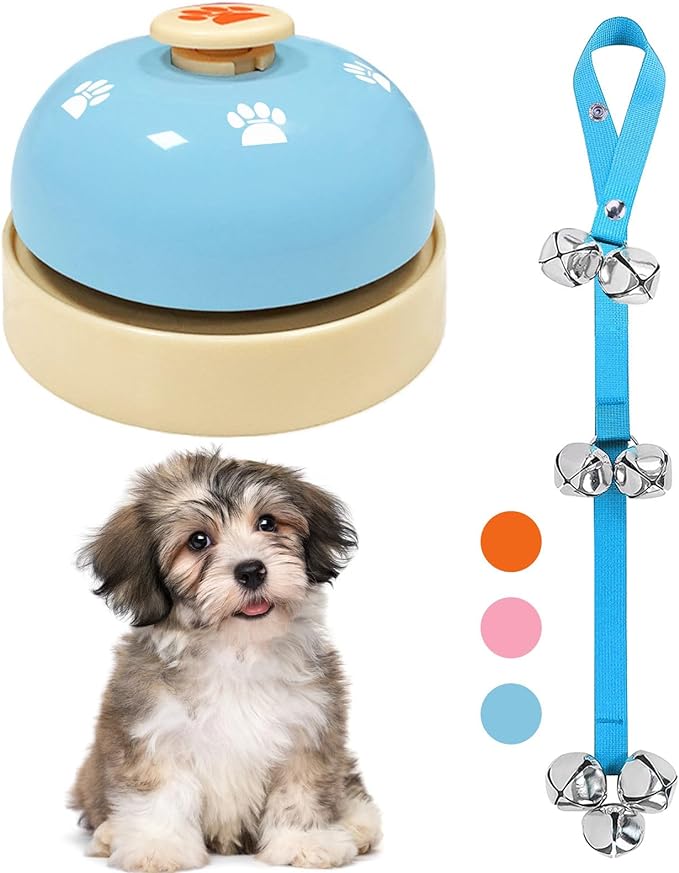
Potty Bell Starter Pack
- Comes With 2 Bell Types
- Available In 10 Colors
- Only $9.95!
Fear Or Wariness of the Bell Sound
Some dogs might be startled or dislike the loud jingle sound. If this happens, desensitize your dog by softly ringing or muffling the bell to reduce the sound. Pair the sound with extra delicious treats and praise to gradually work up a positive association. As your dog becomes accustomed to the sound, gradually increase the volume.
Forgetting To Ring The Bell
Consistency is key when you are potty bell training. If your dog goes back to scratching, barking, or whatever signal they used, guide them to the bell and encourage them to touch it before you open the door. As always, praise and reward them when they touch it, and they will start to remember that the bell gets the door open.
Reinforcement and Maintaining Dog Potty Bell Training
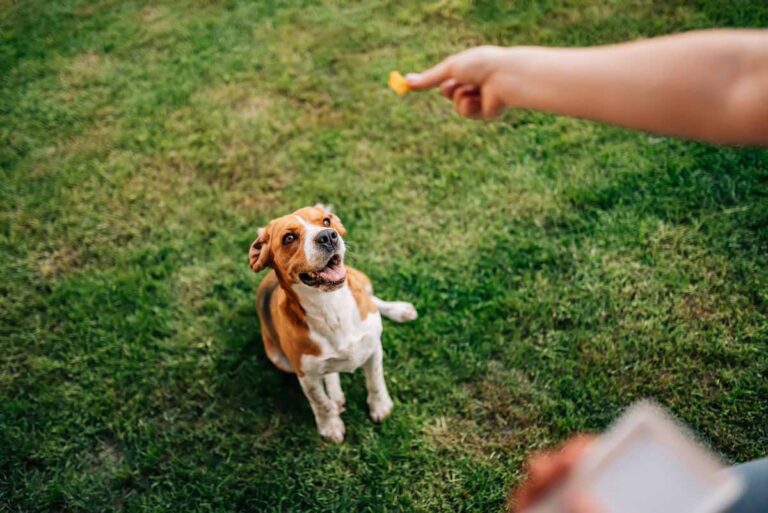
Maintaining and reinforcing the use of the potty bell is an ongoing process that requires patience and consistency. Here are some ways you can guarantee your dog continues to use the dog potty bell effectively:
Consistency
Every time your dog uses their potty bell correctly, praise them and treat them. This positive reinforcement reminds your dog that something good happens when they use the bell.
Ensure everyone in the household, including anyone who watches your dog, uses and encourages the new potty training signal every time. With repetition and consistency, your dog will understand that they need to touch the bell to go outside and go potty.
Routine
Dogs thrive on routine, so maintaining a consistent schedule for potty breaks can help ensure successful use of the potty bell. Sticking to a routine helps to reinforce the habit and keeps your dog’s internal schedule aligned.
Gradual Reduction Of Treats
When you first start training, you should give your dog a treat every time they touch or use the bell. Once your dog has progressed and is using the bell every time they need to potty, you can reduce the frequency of the treats. Be sure to maintain the praise and affection to ensure your dog doesn’t become overly dependent on treats to perform the desired behavior.
Encourage Independent Use
After your dog is comfortable ringing the bell before they go outside, wait for them to ring the bell without prompting. If they seem to forget, gently remind them by guiding them to the bell and waiting for them to ring it before you take them out.
Keep The Dog Potty Bell In Good Condition
Making sure that the dog bell is always working and easily accessible to your dog is vital to dog bell potty training. If the bell isn’t functioning correctly or if your dog has trouble hitting the bell, it could discourage your dog from using it.
Address Setbacks
If they continue not using the bell, ensure there aren’t any underlying issues like changes in the environment or health conditions that could affect their behavior.
Conclusion
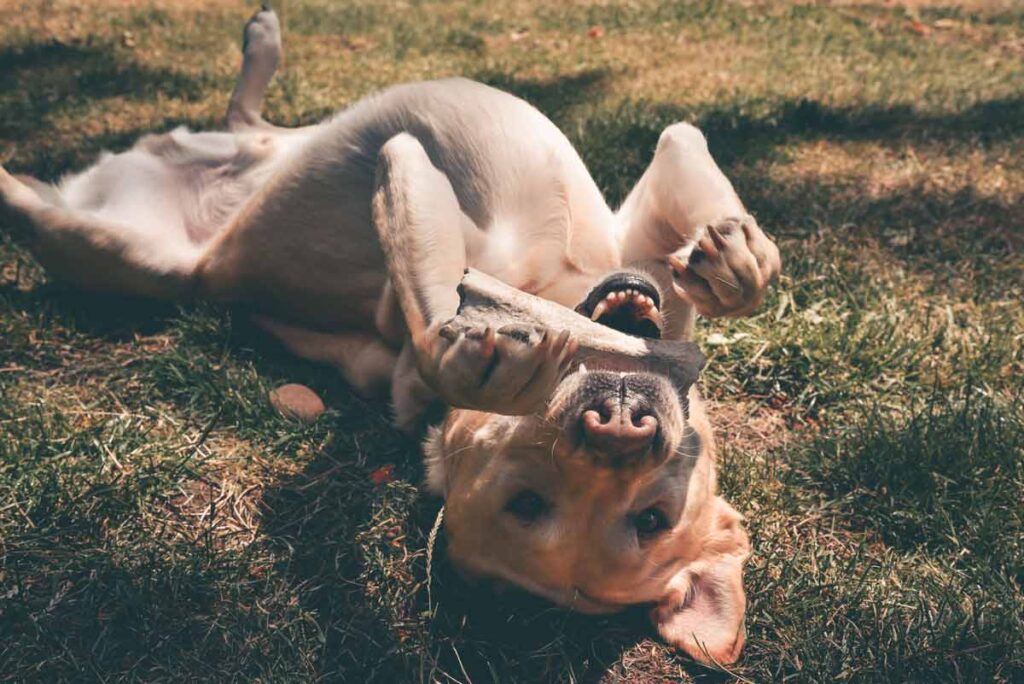
Dog potty bell training can be a game-changer in your and your dog’s routine. Not only can it help to avoid accidents, but it also strengthens communication between you and your dog. So, why not try it and teach your dog to use a potty bell?
You’ll be amazed at how quickly your dog can learn this new skill with patience and consistency. Now, you can ensure that the potty bell will become a reliable and effective communication tool between you and your dog!
Yes, dog potty bells can be a great tool for house training your dog. They offer convenience and streamline communication between you and your pet.
The time it takes to train a dog to use a potty bell varies depending on the dog’s age, temperament, and consistency of training. Typically it can take anywhere from two days to a few months.
Choose the right bell and introduce it to your dog. Use positive reinforcement to help your dog associate the bell with going outside. Reward them for using the bell.
Training a puppy to use a doorbell for potty breaks involves a few straightforward steps. Introduce the bell, associate the bell with going outside, and reward the behavior. Puppies have limited bladder control, so frequent trips outside are necessary for successful dog potty bell training.
Choose a clear signal, like ringing a bell, sitting near the door, or a specific bark. Introduce the signal to your dog and then associate the signal with going outside. Practice this repeatedly and reward your dog every time they use the signal correctly to go potty.


